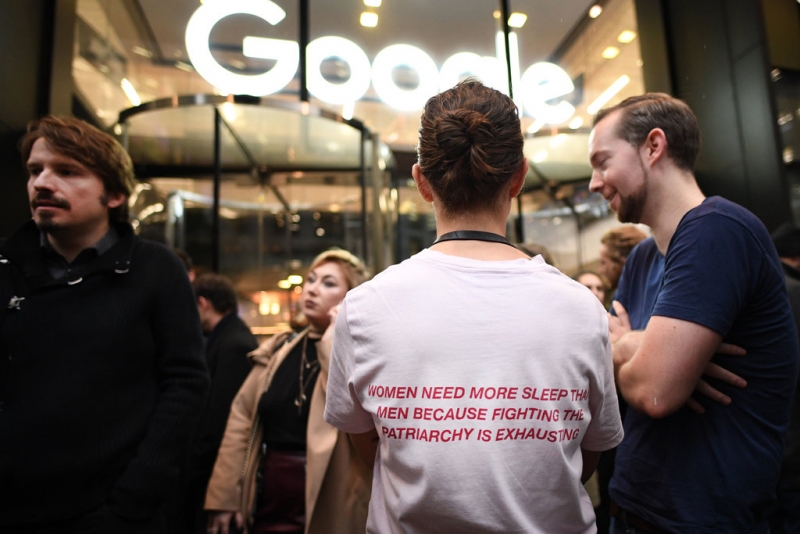Even Google can no longer hide its gender pay gap
On March 4, Google announced something unusual: After its annual pay equity analysis, it gave most of the raises to adjust for unequal practices to men. The company says that it was about to make changes this year that would have compensated many men less than women in a certain job category, so it headed off that inequity. But the analysis appears to leave out many of the factors that women at the company say have led them to be paid less. The company’s annual reviews only compare people in the same job categories, yet women say the problem is that they are hired into lower-tier and lower-pay positions while men start in higher-level jobs with higher pay brackets. It’s hard to know for sure what’s going on with Google’s wage gap, because the company won’t release all of its data publicly. In prior years it claimed that it had no gap in pay between men and women, while arguing that it shouldn’t have to hand over detailed data to the Department of Labor, which analyses pay practices at government contractors. Yet in 2016 the Labour Department found that Google had “systemic” disparities, which an official called “quite extreme.” A new rule could help make sense of what’s going on. On March 4, a federal judge cleared the way for the Equal Employment Opportunity Commission to start requiring companies with 100 or more employees to collect and report their pay scales broken down by gender and race. President Barack Obama proposed the rule in 2016, but when Donald Trump came into the White House, he halted its implementation, saying it imposed too large a burden on businesses and wasn’t likely to offer meaningful enough insights into pay discrimination. The judge ruled that the Trump administration had failed to show that it would have created an actual burden on companies, and she ordered the government to move forward with its implementation. The rule could not only clarify the internal pay practices of companies like Google, but also make some headway in closing the gender wage gap, which remains stubbornly wide. To comply with the rule, companies will have to analyse their pay data in a uniform way and report differences that emerge based on gender and race. The public will get to see the data only in aggregate. The rule will also be useful to people who sue over discrimination. Women suing Google, for instance, could find themselves armed with more than just the internal analyses of pay data provided by the company. There’s good reason to think this rule could reduce the pay imbalance in the United State which hasn’t made much progress over the last decade, by shedding light on companies’ pay inequities. Recent research on pay transparency in Denmark found that it reduced the gender wage gap by slowing men’s salary growth. A study looking at a British survey found that making pay practices transparent raised all employees’ wages. And gender wage gaps are far smaller in both unionised workplaces and the public sector, where pay scales are usually available to anyone. In other words, sunlight’s disinfecting qualities are quite powerful for combating unequal pay. Of course, once they disclose pay disparities, companies could choose not to do anything about them. But that would risk the intervention of the EEOC, which is tasked with ensuring companies pay men and women equally. Other countries have gone much further on public disclosure of pay equity gaps. In 2018, Britain began requiring companies with more than 250 employees to report their mean and median gender pay gaps. Australia and Germany recently passed similar mandates. Iceland makes companies undergo yearly audits to prove that they pay men and women equally and to fix any gaps larger than 5pc. France has also started requiring companies to report how much they pay women compared with men and, if the gaps aren’t fixed within three years, will fine them up to 1pc of their payroll. We can already see the fruits of these kinds of efforts at transparency. Google, for example, has been forced to cough up the fact that in 2017 its female British employees on average earned 17pc less per hour than the male ones. It has been illegal for an employer to pay women less than men for the same work in this country for over half a century. And yet women are still fighting unequal pay in the tech sector and beyond. American women who work full time year-round make 20pc less than men. But before they can do something about it, they have to know what the men around them earn and whether they’re unfairly getting less. Anything that brings this information to light will help in the fight for equal treatment.
Related Posts

